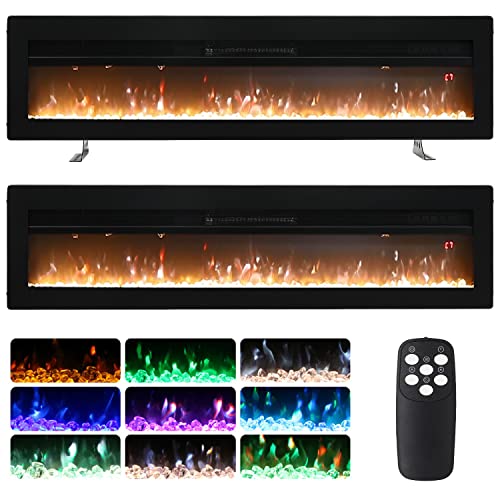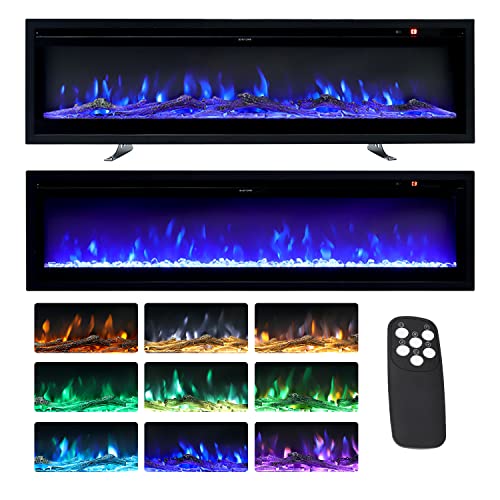10 Things That Your Family Teach You About Cheap Wood Burning Stoves
페이지 정보

본문
 Cheap Wood Burning Stoves (Opensourcebridge.Science)
Cheap Wood Burning Stoves (Opensourcebridge.Science)Wood and pellet stoves add an inviting atmosphere to any home. However, homeowners should consider the following factors prior to buying. Cost, environmental impact and energy efficiency are a few of them.
 A wood stove must have an EPA-certified efficiency of 75% or greater. This will lower the amount of smoke emitted into air and you might be qualified for a tax rebate.
A wood stove must have an EPA-certified efficiency of 75% or greater. This will lower the amount of smoke emitted into air and you might be qualified for a tax rebate.Cost
Many people prefer to have a wood-burning stove as a low cost and environmentally friendly heating solution for their home. They provide a feeling of warmth and comfort, and are popular in winter months. They also provide an alternative to the high energy bills incurred by the rising cost of gas and electricity. Those who use log burners should purchase locally and sustainably sourced wood and ensure it's properly dried. They should keep the firewood in a dry, well-ventilated area. A modern, high-quality log burner will burn the fuel with very small wood burning stove high efficiency, which means that 4/5 of the energy stored in the logs is converted into heat.
Another advantage of Wood burner clearance sale stoves is that it can be used as a backup heat in the case of power failure. However, they aren't ideal for every home since they can't heat the entire space. Ask a professional for advice and recommendations if you are contemplating installing a stove. This will help you pick the best stove for your home.
Unlike other forms of heating wood-burning stoves generate minimal or no emissions. Inhaling carbon monoxide as well as other organic gases, including particulates, could be dangerous. These gases are released during the burning of timber, intranet.candidatis.at and they could cause lung problems. This issue can be prevented by using a smoke-control system and properly drying the logs prior to burning.
A kilowatt of heating power can be produced through a wood stove at less than five percent of the cost of gas or electricity, and it can be free in the event that you have access cheap or free firewood. Wood is a renewable source, so it will never run out. A wood stove can save you money on utility bills and make your home more energy efficient.
A wood stove can increase the value of your home and can increase its resale value. It is simple to set up and comes in a variety of designs. Additionally, they can be used in any room, and could even be a focal point in a living room or dining area.
Environmental impact
When properly used If they are used properly, wood stoves are an energy source that is renewable and are more affordable than gas or electricity. They also provide independence from energy providers, which is important since prices are rising. They also offer an alternative source of heat in the event of power shortages. However, they are not without their flaws. They can create pollution and harm the environment if not burnt correctly.
The smoke from wood is hazardous to humans, and particularly to children and the elderly. It is made up of fine particles as well as other harmful elements. These pollutants can cause eye irritation and respiratory issues. It is especially dangerous for those with preexisting health conditions. It is also a significant risk of premature death and heart disease.
The environmental impact of a wood-burning stove varies based on the type of wood used and the method by which it is burned. Unseasoned or damp wood produces more smoke than dried logs that have been kiln-dried. They can release more particulate matter, volatile organic compounds, and polycyclic aromatic hydrocarbons that contribute to air pollution. This type of small wood burning heater-burning stove could also pose an ignition risk.
Many governments have provided incentives in the past to encourage people to replace their old wood stoves with more environmentally friendly ones. But a recent study found that the stoves of today emit 750 times more tiny particle pollution than a modern HGV truck. The study was commissioned and supported by experts from the campaign group Mums for Lungs.
To reduce the environmental impact, use kiln dried logs and a clean burning stove. They can reach efficiencies of up to 80 percent which is a lot superior to an open flame. The fuel is also burnt more efficiently, leading to less waste. A wood stove is safer over an open fire which could result in a house fire.
The environment benefits from the sustainable use of woodland and forests. The harvesting of trees and plants creates habitats for wildlife and the openness of the forest canopy encourages more plant diversity. It also improves the health of soil which reduces runoff and erosion. If the forest isn't replaced, the ecosystem may be damaged.
Energy efficiency
A wood stove is a great choice if you are looking to add a fireplace to your home, or you're looking to cut down on your energy bills. However, before purchasing one, make sure you're aware of the up-front costs. According to experts, the average wood stove could cost up to $1,300. This doesn't include installation fees and other supplies like flue materials.
Wood stoves can reduce your energy bills and also aid in reducing greenhouse gas emissions. They accomplish this by converting toxins in to CO2 that is clean burning. They also increase the value of a home and can be bought at a price as low as $500 for an old or reclaimed model. A more modern stove can cost you as much as $10,000 however there are a lot of options to choose from.
If you're thinking of purchasing a wood stove, look for one that's EPA certified. These stoves have higher efficiency of combustion meaning that you'll use less british wood burning stoves for heating your home. Stoves that are EPA-certified burn cleaner and reduce harmful air pollution.
High-efficiency stoves are also designed to keep the area of combustion sufficiently hot to completely ignite the gasses from wood and other fuels. This stops them from escaping into the room as smoldering gases, which can create creosote-like deposits in the chimney and contaminate the surrounding environment.
You'll need a place to store the wood fuel, as well as sufficient space to stack it. You'll need to make sure that the stove is placed properly in the room and that there is enough space between the stove and the walkways. Additionally, you'll need a ventilation system to remove the fumes and gases from your home. The initial cost of a wood-burning stove is significantly lower than the advantages. Royce is an avid wood boiler user for 15 years, claims to save thousands of dollars in heating bills each year. He attributes his savings to not paying for oil or electricity. He also enjoys the scent of burning wood and watching the flames dance.
Maintenance
A wood stove is among the most efficient methods to heat your home without the use of electricity. These multi-functional appliances are energy efficient, provide an inviting ambience and last for a long time with proper maintenance. There are additional costs involved with buying and installing a stove. These include the cost of the materials and labor. These costs can also be affected by the size and type of the stove. For instance, a huge cast iron catalytic stove will cost more than a smaller, non-catalytic stainless steel stove. Additionally, there are costs for modifying the existing structure and finishes as well as HVAC, electrical, and plumbing systems. The cost of ducting to bring in fresh air is another cost to be considered.
Burning wood is an unpleasant process that produces creosote and ash. This is why it is important to ensure that your log burner is in top shape. It is recommended to clean your log burner once every year. In this manner you can check the stove's components for damage or wear. It's also a good idea to replace the firebricks in the event that they're damaged or worn out. You should also sweep your chimney at least twice each year to remove creosote, and to avoid dangerous gas leaks.
If you're looking for a low-cost wood stove that won't break the bank Look for a model with a basic design and few moving parts. These stoves are less prone to break down than more complicated engineered models. In addition, the simpleness of a stove's layout will reduce its maintenance costs and repair costs.
Another option to save money on a wood stove is to purchase a used or refurbished model. These stoves might not be as efficient as modern models but they are still an excellent option for those on a tight budget. A used or refurbished stove may also save you money on the initial costs of installation and purchase.
It's important to look at prices and also consider the cost of consumables, like firewood and logs. The SIA (Stove Industry Alliance), estimates that one cubic metre of kiln dried logs can cost between PS120 and PS140. Some advanced stoves allow you to burn alternative fuels such as pellets or smokeless coal alongside regular logs, making them more cost-effective at certain times of the year.
- 이전글Kannst du Mir einen Witz Erzählen? 25.01.28
- 다음글Guide To Lost Key In Car: The Intermediate Guide In Lost Key In Car 25.01.28
댓글목록
등록된 댓글이 없습니다.



